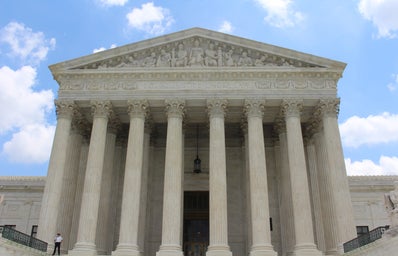On September 18th, 2020, Justice Ruth Bader Ginsburg, who served on the Supreme Court for 13 years, died. Before her passing, she stated, “my most fervent wish is that I will not be replaced until a new president is installed.” Unfortunately, her request was ignored. Amy Coney Barrett, a former lawyer and jurist, was soon nominated and later confirmed to the Supreme Court on October 26, 2020. There is nothing wrong with a President filling an open Supreme Court seat with someone who does not necessarily share the same values as the previous justice; however, Justice Barrett was confirmed a week before the election.
In 2016, approximately seven months before the presidential election, Former President Barack Obama wanted to have a nomination hearing for Marrack Garland to replace Justice Antonin Scalia who passed away a month earlier. Unfortunately, the Republican majority Senate refused to hold the hearing because it was an election year. In an August speech in Kentucky, Senate Majority leader, Mitch McConnell, cites telling Barack Obama that he will not fill the vacancy as one of his proudest moments. The same person who believed that a President could not fill an open seat during an election year, four years later believed the exact opposite, unless, the problem was the president and not when the nomination proceedings took place. Later, President Trump was able to nominate Justice Kavanaugh to the court after he took office, and Justice Barrett four years later during an election year.
Now, due to these proceedings, the Supreme Court has a 6-3 conservative majority. This means that topics such as abortion rights, the Affordable Care Act, L.G.B.T.Q. rights and more are up to debate. For democrats, there is only one course of action: pack the court.
Court packing is defined as adding additional justices to the court, not just filling a vacancy. In U.S. history, there have been few instances of changing the number of justices in the Supreme Court. In 1800, John Adams reduced the Supreme Court from six to five. With the start of the Civil war, the Supreme Court was raised from six to nine justices, and Abraham Lincoln added a tenth justice in 1863. In 1866, the Supreme Court was cut down to seven. Then in 1869, the court was increased to nine justices, where it would stay. In the 1930s, Franklin D. Roosevelt attempted to increase the court to fifteen (a justice added for every justice serving on the court over seventy). His plans were obviously rejected.
Adding justices to the Supreme Court is not without its dangers. If one president were to increase the number of justices, there is nothing that stops the following president from doing the same. However, when basic human rights are on the table, it’s worth the risk.
Donald Trump did not pack the supreme court, but maybe the next democratic president should. The real problem with his actions is that he filled this opening during an election year, after millions of Americans had already voted, and after Barack Obama was not allowed to fill a vacancy in the court years earlier because it was an election year. Do not allow republicans to convince the public that bulldozing is normal but responding is not. It’s time to revisit expanding the court.



